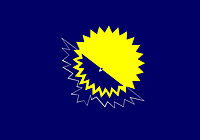Andean Parliament
This article's lead section may be too short to adequately summarize the key points. (February 2016) |
Andean Parliament Parlamento Andino | |
|---|---|
 | |
| History | |
| Founded | October 25, 1979 |
| Leadership | |
President | Luis Fernando Duque (Colombia), Colombian Liberal Party |
Vice-President | Hebert Choque (Bolivia), Movement for Socialism |
Vice-President | Patricio Zambrano Restrepo (Ecuador), Socialist Party – Broad Front of Ecuador |
Vice-President | Hildebrando Tapia Samaniego (Peru), Christian People's Party |
| Seats | 25 deputies |
| Meeting place | |
| Bogotá | |
| Website | |
| www | |
The Andean Parliament is the legislative assembly of the Andean Community. Since 1996 it has been endowed with the function of political control of the Andean Integration System (Sistema Andino de Integracion), composed of the Andean Council of Presidents, the Andean Council of Foreign Affairs, the Andean Community Commission, the Andean Community General Secretariat and the Andean Community Court of Justice.[1][2]
History
Although it was created by a constitutive treaty on 25 October 1979, the Andean Parliament was formally established in January 1984. Initially composed by delegates coopted by the national legislators, the Trujillo Protocol, approved on 13 March 1996, stated that the five delegates from each country would be directly elected. This provision was only enacted by the Colombian Parliament through Law 1157 in 2007, and implemented alongside the 2010 parliamentary election.[3]
It is presently composed of deputies elected in five countries, Bolivia, Chile (since 2015),[4] Colombia, Ecuador and Peru. Venezuela left in 2006. Its seat is located in Bogota; earlier it was in Lima.

In October 2011, Spain, Mexico, Panama and the Sahrawi Arab Democratic Republic became observers at the Andean Parliament.[5]
Direct elections
Like the Central American Parliament and unlike the European Parliament, the Andean Parliament members are elected on the same day as their national counterparts, there are thus no simultaneous Andean elections.
- Bolivia: first direct election in 2014[6] [7]
- Chile: the five Chilean representatives are still co-opted members of the Chilean Parliament as the most recent Chilean general election were held in 2013, two years before Chile became a full-fledged member of the Andean Parliament; the first direct election will be held in 2017
- Colombia: first direct election in 2010
- Ecuador: first direct election in 2013[8]
- Peru: first direct election in 2006; each party must present a list of 5 candidates and 10 substitutes, all Peruvian-born (Ser peruano de nacimiento)[9]
See also
- Central American Parliament (Parlacen)
- Latin American Parliament (Parlatino)
- Mercosur Parliament
References
- ^ "Quienes somos - Historia" (in Spanish). Parlamento Andino - Oficina de Comunicaciones.
- ^ "Andean Community of Nations", International Democracy Watch
- ^ Uriel Ortiz Soto (2 December 2009). "Colombia elegirá parlamentarios andinos" (in Spanish). elespectador.com.
- ^ "Chile se integró al Parlamento Andino, con voz y voto" (in Spanish). Peru21. 3 September 2015.
- ^ Parlamento Andino - Oficina de Comunicaciones (14 October 2011). "Venezuela es invitada por el Parlamento Andino a volver a la Comunidad Andina. España, México, Panamá y Parlamento Saharaui observadores" (in Spanish). Archived from the original on December 16, 2011.
{{cite web}}: Unknown parameter|deadurl=ignored (|url-status=suggested) (help) - ^ "Parlamento Andino inició un proceso de difusión con el objetivo de promocionar las elecciones directas al organismo en Bolivia" (in Spanish). Parlamento Andino - Oficina de Comunicaciones.
- ^ "Nueva representación boliviana juramenta en Parlamento Andino" (in Spanish). La República. 5 March 2015.
- ^ "Resultados oficiales - Parlamentarios andinos" (in Spanish). Consejo Nacional Electoral - República del Ecuador.
- ^ "Elecciones Parlamento Andino" (in Spanish). Jurado Nacional de Elecciones.
